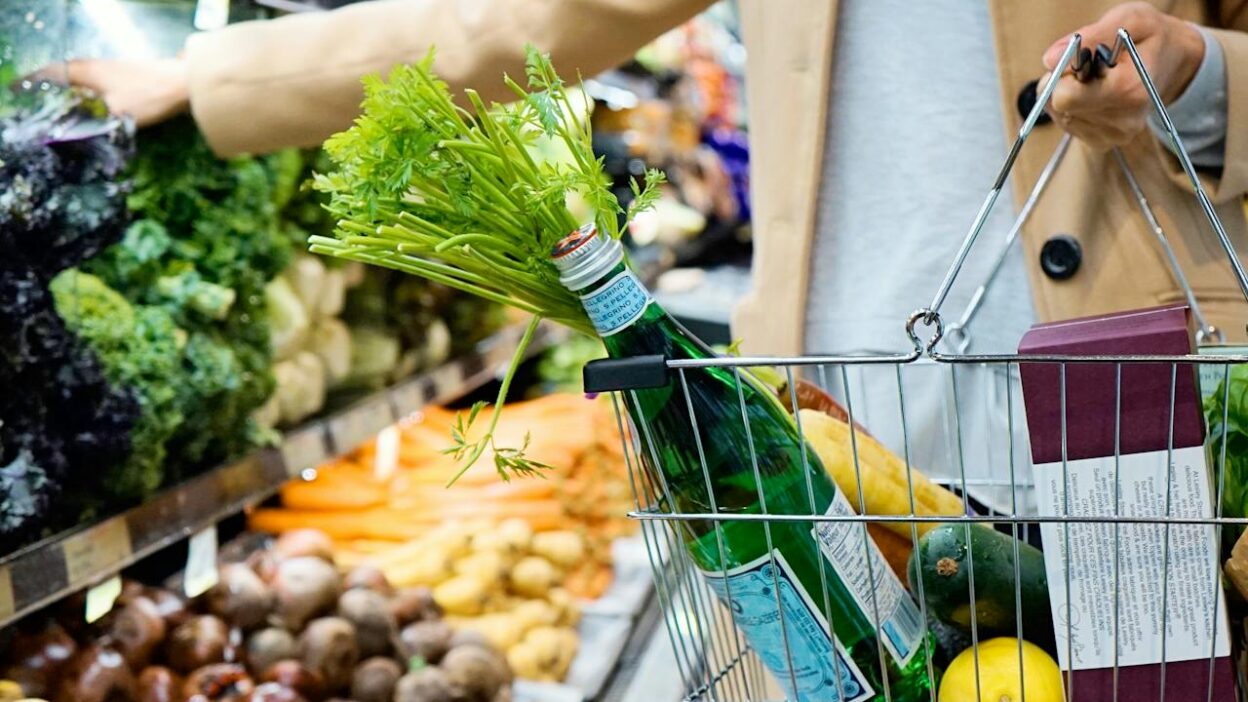Over the past two decades, the way we eat has changed more than many people realize. From the rise of food delivery apps to the growing popularity of plant-based foods, our eating habits have been shaped by technology, busy lifestyles, health trends, and global influences. Some of these changes have made healthy eating easier and more personalized, while others have contributed to more processed food and less balanced meals. In this blog post, we’ll look at the key shifts in eating habits since the early 2000s, what’s improved, what’s worsened, and what it all means for your health today.
The Rise of Processed and Convenience Foods
One of the most dramatic changes in our eating habits has been the surge in highly processed or ultra-processed foods. Think about it: twenty years ago, getting dinner usually meant cooking or, occasionally, calling for takeout. Today, we’re surrounded by quick and easy food options, from frozen meals to restaurant delivery apps that bring nearly any dish to our doorstep with just a few taps.
The scale of this change is striking: in Western countries, over half of adults’ energy intake now comes from ultra-processed foods, with the United States leading globally. Ultra-processed foods account for 58-60% of total caloric intake for Americans. Even more revealing is that these foods dominate our grocery stores. A staggering 73% of foods available in major U.S. supermarkets are ultra-processed.
Why has this shift happened? It’s largely because our lives have become increasingly busy and fast-paced. These convenient options are not only quick and easy but often cheaper than buying fresh ingredients. For many people juggling work, family, and other responsibilities, the appeal of ready-to-eat meals is hard to resist.
Behind the scenes, global trade, foreign investment, and large-scale food production have made processed foods widely available and affordable, even in lower-income countries. Ultra-processed foods are also designed to last longer on shelves and taste consistently good, which makes them more appealing and easier to distribute across large regions.
However, this convenience comes with some concerning health trade-offs. Most highly and ultra-processed foods are packed with sugar, salt, and unhealthy fats, while missing important nutrients our bodies need, like fiber and vitamins. Research has shown that relying too heavily on these foods can increase our risk of several health problems, from weight gain to high blood pressure to heart disease.
While these convenient and budget-friendly foods aren’t likely to disappear from our lives anytime soon, understanding their impact can help us make smarter choices about when and how often to include them in our diets.
The Decline of Traditional Dietary Staples
There was a time when a typical dinner plate included a generous serving of vegetables, maybe some beans, lean meats, and a helping of whole grain bread. While we know more than ever about the importance of these traditional staples, they’re showing up less and less in our daily meals. The numbers tell a surprising story about how our eating patterns have shifted away from these nutritional powerhouses.
Let’s talk about vegetables first. Despite all we know about their benefits, only about 7 out of 100 American adults are eating the recommended amount of vegetables daily. It’s not just that we’re choosing not to eat them. They’re actually becoming less available in our food supply. In fact, 2024 saw the lowest vegetable supply in over 35 years. And when we do eat vegetables, they often come in processed forms, like frozen dinners or canned soups, which might not pack the same nutritional punch as fresh produce.
Beans and legumes tell a similar story. These affordable nutrition powerhouses (black beans, lentils, and chickpeas) are showing up in fewer meals than ever before. In fact, on any given day, only about 20% of us eat any legumes at all. Why? Many of us didn’t grow up eating them regularly, aren’t sure how to prepare them, or feel they take too long to cook.
When it comes to grains, we’re facing a similar challenge. Health experts recommend making at least half of our grains whole grains, but we’re nowhere near that goal. Only about 16% of the grains we eat are whole. White bread, refined pasta, and processed cereals still dominate our shopping carts, especially in families with children or tight budgets.
There is some good news, though! Fruit consumption has been trending up, particularly among kids and health-conscious adults. But even here, we face obstacles: rising grocery prices, limited access to fresh foods in some neighborhoods, and the constant temptation of more convenient (but less nutritious) alternatives.
The Rise of Snacking and Sedentary Behavior
Today, snacking has become almost like a fourth meal for many of us. Nearly all American adults grab snacks regularly, and about half of us reach for snacks at least three times a day. This is especially true for younger adults, who often replace entire meals with snacks during busy workdays.
The snack aisle looks different these days, too. While potato chips and candy bars haven’t gone anywhere, they’re now sharing shelf space with protein bars, veggie chips, and all sorts of “healthy” alternatives. But let’s be honest! When we’re rushing between meetings or feeling that afternoon energy slump, convenience usually wins over nutrition. We tend to grab whatever’s easiest to find in the nearest vending machine or convenience store.
At the same time, we’re moving less than ever before. Think about your typical day: how much of it do you spend sitting? If you’re like most Americans, it’s probably quite a lot. Less than half of us get the exercise we need, and only about one in four people combine both cardio and strength training as recommended. Even more concerning? About a quarter of adults don’t get any physical activity outside of work at all.
The COVID-19 pandemic didn’t help matters. Many of us found ourselves stuck at home, spending more time in front of screens, and yes, snacking more than usual. While we’ve seen a surge in interest in fitness and wellness since then, real-world challenges like finding time, motivation, or affordable gym access still get in the way for many people.
Here’s the thing: it’s not just about the snacks, and it’s not just about the sitting. It’s about how these two trends work together. When we’re less active but snacking more, it throws off our body’s natural energy balance.
The Popularity of Plant-Based and ‘Clean Eating’ Trends
Remember when vegetarian options at restaurants were limited to salads and maybe a veggie burger? Those days are long gone! Plant-based foods and “clean” food choices have exploded in popularity, moving from niche health-food stores to mainstream supermarket shelves. Just take a look around your local grocery store. You’ll find everything from oat milk to cauliflower pizza crusts to plant-based chicken nuggets.
This shift isn’t just a passing fad. Nearly 6 out of 10 American households now regularly buy plant-based foods, and more people are jumping on board every year. Why? It’s not just about health anymore. Many of us are thinking about how our food choices affect the environment, animal welfare, and even our local communities. Plus, with so many tasty alternatives available now, eating more plants doesn’t feel like a sacrifice. It’s become an exciting way to explore new flavors and ingredients.
The “clean eating” movement has taken off alongside plant-based eating. More of us are taking a closer look at food labels and asking questions about what’s really in our food. What started as a trend among health enthusiasts has become a mainstream concern. Most Americans now say they care about limiting artificial ingredients and additives in their food. Instead, people are reaching for whole, minimally processed ingredients that they can actually pronounce!
Young people, especially, are leading this food revolution. If you’ve noticed more plant-based options in restaurants or “clean” labels in grocery stores, you can thank Millennials and Gen Z for that! They’re voting with their dollars for healthier, more sustainable food choices, and food companies are listening. The market for these products is growing so quickly that experts expect it to triple in size over the next decade.
But here’s the interesting part: most people aren’t going completely vegetarian or vegan. Instead, they’re taking a more flexible approach, maybe having a plant-based breakfast, a traditional lunch, and a “clean” dinner. This balanced way of eating (sometimes called “flexitarian”) shows how we’re becoming more thoughtful about our food choices while still keeping things practical and enjoyable.
The Return to Home Cooking
Remember when the microwave was the most-used appliance in many kitchens? Well, things have changed dramatically! Nearly 9 out of 10 Americans are now cooking more meals at home, and it’s not just about saving money. We’re rediscovering the joy and benefits of preparing our own healthy meals.
The COVID-19 pandemic really kicked this trend into high gear. With restaurants closed and more time at home, many of us found ourselves pulling out recipe books, watching cooking videos, and experimenting in the kitchen. Even as life has returned to normal, these cooking habits have stuck around. Why? Because people are realizing that home cooking isn’t just cheaper, it’s often healthier and more satisfying too.
Social media has played a big part in this shift. Platforms like TikTok and Instagram are full of easy recipe ideas, cooking tips, and meal prep inspiration. Whether you’re looking for quick weeknight dinners or trying to master sourdough bread (remember that phase?), there’s a whole community of home cooks sharing their knowledge online.
What’s really exciting is how this return to home cooking is changing our relationship with food. When you cook at home, you know exactly what’s going into your meals. You can control portions, adjust ingredients to your taste, and even experiment with healthier versions of your favorite foods. Plus, many families are finding that cooking together is a great way to connect and teach kids about healthy eating habits.
Personalized Nutrition and Wellness Tech
Today, our phones and watches know more about our eating and exercise habits than we do! The way we track and understand our nutrition has completely transformed over the last 20 years, thanks to technology that feels like it’s straight out of a sci-fi movie.
Take DNA testing, for example. Who would have thought that a simple cheek swab could tell you why coffee makes you jittery or why certain diets work better for you than others? These tests can now reveal how your body processes different nutrients, helping you make food choices that actually match your genetic makeup. And it doesn’t stop there! New at-home gut health tests can even show how the tiny bacteria in your digestive system influence what foods work best for you.
Our everyday devices have gotten smarter, too. That fitness watch on your wrist isn’t just counting steps anymore. It’s tracking your sleep, monitoring your heart rate, and even suggesting when you might need to drink more water or eat more protein. The best part? All this information syncs right to your phone, where apps can help you make sense of it all and suggest personalized meal plans based on your physical activity level and health patterns.
What’s really exciting is how all these tools work together. Maybe your watch notices you had a particularly intense workout, so your nutrition app suggests foods rich in protein and electrolytes for recovery. Or perhaps your sleep tracking shows you’re not resting well, so you get tips about which foods might help you sleep better. It’s like having a personal nutritionist and health coach right in your pocket!
But here’s the thing: all this technology isn’t just about tracking numbers or following strict rules anymore. Instead, it’s helping us understand our bodies better and make more informed life choices. Whether you’re trying to boost your energy, improve your sleep, or just feel healthier overall, these tools can help you figure out what actually works for your body, not just what works for everyone else.
Public Policy and Regulatory Shifts in Food Labeling and Marketing
Remember when reading a food label felt like you needed a degree in nutrition science? Well, that’s finally starting to change! Governments and health organizations have been working hard to make it easier for all of us to understand what’s really in our food and make healthier choices when we shop.
One of the biggest changes you’ll notice in 2025 is the new front-of-package labels. Instead of having to turn packages around and decode tiny nutrition tables, you’ll see clear, simple information right on the front. It’s kind of like a traffic light system, showing at a glance if foods are high, medium, or low in things like sugar, salt, and saturated fat. Pretty handy when you’re rushing through the grocery store!
The word “healthy” on food packages is getting a makeover, too. For the first time since 1994 (yes, you read that right!), there are new rules about when companies can call their products healthy. Now, foods need to actually contain good stuff like fruits, vegetables, or whole grains, not just be low in fat like the old rules required. It’s about time, right?
Even those confusing expiration dates are getting clearer. You know that moment when you’re staring at a “sell by” date wondering if your food is still good? The new “Best If Used By” labels make it much easier to understand when food is still safe to eat, helping us waste less food and save money too.
Here’s something interesting: some places are trying to help us cut down on sugary drinks by adding special taxes to them. And guess what? It’s working! Cities like Philadelphia, San Francisco, Seattle, and Boulder have already seen success with these taxes, with sugary drink purchases dropping by about a third when prices go up. Santa Cruz, California, just joined the club in 2025 with a 2-cent-per-ounce tax on sugary beverages (though they were careful to exclude things like milk drinks, natural honey-sweetened beverages, and medical supplements). The results are pretty clear. When these taxes go into effect, people tend to buy fewer sugary drinks, and companies respond by creating new beverages with less sugar, giving us more healthy options when we’re thirsty.
All these changes might seem small on their own, but together they’re making a big difference in how we shop and eat.
Health Impacts: The Rising Burden of Diet-Related Diseases
While we’ve made progress in understanding nutrition over the last twenty years, we’re facing a challenging reality: the way many of us eat is making us sick. Despite having more information than ever about healthy eating, more than half of Americans are dealing with at least one diet-related health condition. Let’s talk about what this really means for our everyday lives.
Heart disease remains our biggest health challenge. Think about it: in a room of 100 adults, about 37 would have some form of cardiovascular disease. This isn’t just about genetics; it’s closely tied to what we put on our plates, especially when it comes to salt, sugar, and unhealthy fats.
The diabetes story is equally concerning. Many people don’t realize that what they eat directly affects their blood sugar levels throughout the day, and over time, unstable blood sugar can lead to diabetes. About 11 out of every 100 adults have type 2 diabetes, and even more surprising? Nearly 4 in 10 have pre-diabetes, often without knowing it. What’s particularly worrying is that diabetes isn’t just affecting adults anymore. About 352,000 young people under 20 are living with diabetes, and these numbers have been climbing steadily since 2002. While most of these cases are type 1 diabetes (which isn’t related to diet but still crucial in managing the condition), we’re seeing more young people develop type 2 diabetes, something that used to be rare in kids. Many of these cases could be prevented or managed better through healthier eating habits, especially by cutting back on refined carbs and added sugars.
Weight has become another major concern. Four in ten American adults are living with obesity, which can lead to other health issues like joint problems and certain cancers. But here’s something important to understand: this isn’t just about personal choices. Many people live in areas where finding affordable, nutritious food is a real challenge.
We’re also learning that what we eat also affects our mental health. There’s growing evidence that our diet choices can impact everything from our mood to our memory. Even people who eat plenty of calories might be missing important nutrients their bodies need to stay healthy.
What’s particularly troubling is how these chronic diseases don’t affect everyone equally. Communities with limited access to fresh, healthy foods tend to face higher rates of these diet-related diseases. It’s a reminder that creating better health isn’t just about knowing what to eat. It’s about making sure everyone has access to healthy choices.
What These Changes Mean for Your Own Eating Habits
So, what does all this mean for you and your daily food choices? Let’s break it down into practical steps you can take today to build healthier habits that actually last.
First, remember that small changes add up. You don’t need to overhaul your entire diet overnight. Maybe start by cooking just one more meal at home each week, or adding an extra serving of vegetables to your dinner. These little steps are often more sustainable than dramatic changes.
Think about your current eating patterns. Are you snacking more than you’d like? Try keeping a food diary for a few days. Not to judge yourself, but to spot patterns. Maybe you’re reaching for sugary snacks during afternoon meetings, or skipping breakfast and overcompensating later. Understanding your habits is the first step to changing them.
Technology can be your friend here. Those nutrition apps and fitness trackers we talked about? They can help you make more informed choices. But don’t get obsessed with the numbers. Use them as gentle guides rather than strict rules.
Speaking of rules, let’s ditch the “all or nothing” mindset. You don’t have to go completely plant-based or cut out all processed foods to be healthier. Instead, think about adding more whole foods to your meals while still enjoying your favorites in moderation. This balanced approach is much more sustainable in the long run.
Remember, healthy eating looks different for everyone. What works for your friend or favorite social media influencer might not work for you, and that’s okay! The key is finding sustainable habits that fit your lifestyle, preferences, and schedule.Want to dive deeper into building healthier habits that stick? Check out our comprehensive guide on how to build healthy habits for more detailed strategies and tips.



